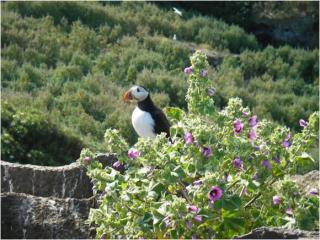Understanding Public Attitudes For Biodiversity Management
Published on 16 June 2010 in Ecosystems and biodiversity

Introduction
Creating a ‘greener’ Scotland is one of the five strategic objectives underpinning the Scottish Government’s work. The Scottish Biodiversity Strategy (SBS) published by the Scottish Government in 2004 aims to conserve and enhance biodiversity for the health, enjoyment and well-being of the people of Scotland, and all public bodies have a general duty for conservation under the Nature Conservation (Scotland) Act 2004. Achieving these goals is necessary not only to comply with the law, but to maintain Scotland’s well-being, since biodiversity provides goods and services which underpin all our activities (Millennium Ecosystem Assessment, 2005).
Key Points
- Public (and professional) attitudes to specific management activities are not random, but informed by rich conceptions of nature’s properties, and its relationship with humans.
- Properties perceived in nature include “balance”, “connectedness” and “naturalness” (being untouched). These inform judgement of actions: often, options are favoured which are considered to restore balance.
- Many recognise that natural resources can provide multiple benefits, connected to multiple values for humans, and appreciate that management decisions reflect difficult choices between these.
- To increase acceptance and support for management actions:
- Public attitudes and values should be understood before deciding on specific management actions.
- When communicating about actions, support may be promoted by connecting to widely held views of nature.
- Communication should contained nuanced messages about nature management, acknowledging the pros and cons of management decisions.
Research Undertaken
Several projects have studied perceptions of biodiversity and potential management actions in Scotland, and linked with findings from across the world. The data range from qualitative (from focus-group discussions and interviews, useful for probing and uncovering complex views) to quantitative (from large-scale surveys, useful for providing information about distributions in populations).
.jpg)
- Considerable work has been done in the Cairngorms National Park. A series of group discussions there, found very rich conceptions of biodiversity, irrespective of formal scientific knowledge. A survey showed widespread concern for its decline, with observations of local changes in species of everyday life. Some key attributes or associations with biodiversity were ideas of balance and food-chains. Even those with different attitudes to specific actions can share common underlying views about nature, which provides opportunity for reconciliation.
- Respondents differed in their views on the ‘ideal’ nature. While for some this was wilderness, others yearned for a functional landscape, or an idyll where humans and nature existed in harmony. These views also influenced attitudes towards specific management issues.
- The idea of “balance” was found across multiple groups and studies. For example, in an East Lothian survey on the attractive invasive non-native tree mallow (causing local declines in island puffin populations), respondents did not judge the situation as a simple battle between ‘good and evil’, but were more concerned with the system getting ‘out of control’, and human responsibility for that. Preferences were informed by this, together with ideas about avoiding risk, with more involved individuals taking more factors into account.
- Not only were conceptions of biodiversity and individual species nuanced, and informed by multiple principles, but discussions about management choices revealed respondents generally keen to reflect balance between objectives, and acknowledge multiple goals.
- A recent study in Aberdeenshire has suggested that preferences for specific governance approaches are also a significant influence on judgements. For example, those favouring legislation are unlikely to approve of collective action that builds on voluntary pro-environmental action. This is supported by a cross-cultural systematic review of over 60 case studies of conservation projects, which found understanding and engaging with local institutions and culture was key to project success. Support for specific management activities will likely be encouraged by engaging with local institutions and public ideas of the best ways to go about management.
Policy Implications
These findings accord with other academic research into public participation and views of biodiversity, and support the general drive for more public engagement in decision-making about the environment. Decisions about management options are more likely to be well accepted and supported if public views and attitudes, and the values underpinning these, are understood and respected.
Author
Dr Kerry Waylen & Dr Anke Fischer a.fischer@macaulay.ac.uk
Topics
Comments or Questions
Related External Documents
- Report of the Consultative ...
- Public participation
- Scottish Biodiversity Strategy
- Practical Approaches to Par...







